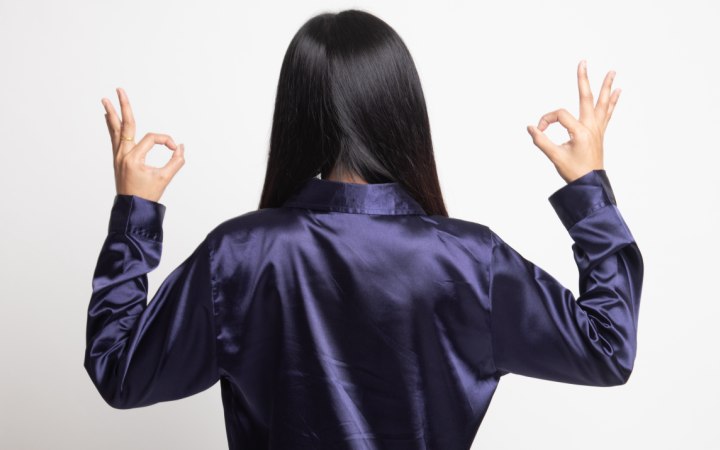Caring for Silk Fabrics

The ultra-smooth and luxurious feel of silk, is there anything else like it? Lightweight, comfortable, and often elegant, silk is a wonderful choice of natural-fiber fabric. Silk fabrics come in a wide variety of types and weaves. Here are some of the choices you can find:
Chiffon: This is the lightest weight silk fabric. It is diaphanous – almost see-through – and creates “billows” to add dimension to various garments. Unless it’s used for scarves, it should be used in combination with some form of lining fabric.
Habotai (China Silk): Generally, the least expensive and most common of the silk fabrics, it is a lightweight, sheer, plainly woven fabric. If you want clothing made with habotai, purchase them ready-made. The fabric is not suited for fitted garments because the seams will tear under stress.
Charmeuse: This is the fabric most people think of when traditional silk comes to mind. The backside of the fabric is a flattened crepe, while the front is a satin weave. It is great for blouses and lingerie.
Jacquard: These are woven fabrics using matte and reflective threads to create patterns in the fabric. The fabric is generally denser and has a heavier weight than most silk fabrics. The patterning of the fabric makes it perfect for free-form dyeing and creating more structured garments.
Noil: Silk noil is made from the short silk fibers left after combing and carding, so it doesn’t shine the way most silk fabrics will. It looks a lot like cotton but will have the soft, silken feel against the skin. Garments made with silk noil can be machine washed on gentle and dried on low-heat settings, but this will give the garments a faded, weathered look. If you want to keep the colors of the garment bright use hand-washing or dry-cleaning services.
Raw Silk: Raw silk is any silk yarn or fabric that hasn’t had the sericin – the natural gum that protects the silk fibers – removed. It is often spun into yarns and woven into tweedy-looking fabrics that are soft to touch, although the fabrics are stiffer and attract dirt and odors because of the presence of the sericin.
Caring for Silk:
It is important to remember that silk is a protein-based fiber and is more similar to wool than to cotton, and is very much like human hair. While it is extremely strong, repeated exposure to the sun will erode the fibers.
Silk can withstand heat, in general – in fact much of the processing done on silk to create the fabrics use intense heat – but it doesn’t respond well to extreme changes in temperature or to over-drying of the fabric in a hot dryer.
In cleaning silk garments, it is important to follow manufacturer’s instructions. Most silk garments will need to be dry-cleaned to protect the delicate fabrics. This typically includes the more structured silk garments and those with very delicate weaves.
However, many silk garments can be hand-washed as long as you do so carefully. Always use a gentle hand-wash detergent or even a mild (baby formula) shampoo and lukewarm water. To remove the excess water after rinsing, roll the garment in a towel and press gently to blot away the extra moisture. Then you can iron the fabric dry using a low-heat setting on your iron. Whenever possible test a swatch or unobtrusive corner of the garment before placing the iron in a visible location on the garment.
Never, ever use chlorine bleach on silk. It will cause the fabric to yellow and the fibers to breakdown more quickly.
Remember that moths will attack and eat silk the same as they do for wool so you must always protect your silk garments when you plan to store them for periods of time. Use cedar blocks to repel moths and other insects during storage. Do not store silk clothing in plastic, as the plastic can trap moisture and lead to yellowing and mildew in the natural fibers.
Furthermore, store silks away from light, especially direct sunlight, to prevent fading of colors and breakdown of the fibers. The best choice for storing silk in inside a cotton pillowcase with a couple of cedar blocks in a dark closet. Be sure the garments have been cleaned before storing to prevent the damage caused by body soils left on the garments over a long storage period.
© Greatestlook.com
Photo: Halfbottle/Shutterstock
Related Posts:
How to clean silk